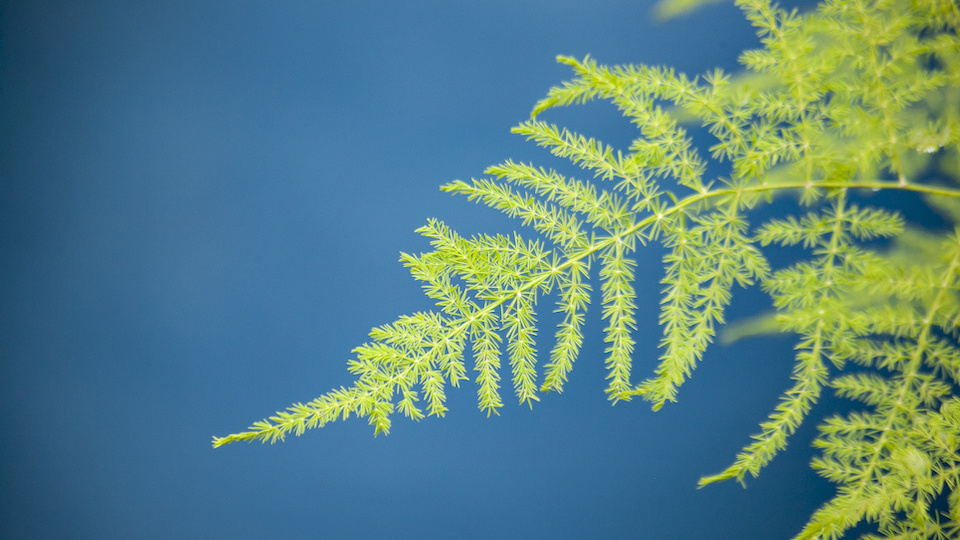Asparagus ferns are delicate and beautiful, often seen draping over the edges of hanging baskets or sitting high on a plant stand, assuming a stately position in the home. There is something so intriguing and elegant about the asparagus fern, even though it is considered an invasive species in some places.
The asparagus fern is not really a fern at all
Perhaps you did not know this, but the asparagus fern is not a genuine member of the fern family. It is, in fact, a member of the Liliaceae family and is a relative to lilies, including daylilies, tulips, amaryllis, and hostas.
Varieties
There are several varieties of asparagus ferns to choose from including:
- Asparagus setaceus – This variety is most often used in flower arrangements and can grow to 10 feet high when well trained.
- Asparagus densiflorus ‘Myeri’ – This variety is also called foxtail asparagus as it has dense foliage on upright stems.
- Asparagus densiflorus ‘Sprengeri’ – This type is the most popular for hanging baskets as it has long and droopy stems and a full form.
Is asparagus fern an invasive species?
In some regions, when planted outdoors, asparagus fern can spread rapidly. This is the case in Florida and Hawaii, where it is considered an invasive species if you wish to have an asparagus fern in these regions, it is best to keep it to a hanging basket or pot.
How to grow an asparagus fern
If you live in planting zones 9 or above, asparagus ferns should be treated like perennials outdoors. In any other zone, it can be planted yearly as an annual, kept in pots or grown indoors year-round. Known as a spiller plant, asparagus ferns have a classic shape that makes them a perfect addition to any container arrangement.
The leaves on an asparagus fern are actually tiny flat branchlets that are known as cladophylls. As plants mature, they become woody and can develop sharp spines on the branches. Use caution when trimming older plants and always wear gardening gloves to avoid injury.
You will know if your asparagus fern is happy because it will produce tiny flowers and berries which can be used to propagate the fern.
Light requirements
Asparagus ferns love dappled shade best. Although they can tolerate more light, try to keep them out of direct sunlight either indoors or outdoors.
Soil requirements
If you are planting asparagus ferns in a container, use only loose, lightweight potting soil that drains well. Outdoors, asparagus ferns do best in soil that is rich, drains well, and is slightly acidic. Asparagus ferns are generally tolerant of less-than-ideal soil conditions, which makes planting even easier.
Water requirements
Asparagus ferns tend to be thirsty plants, and it can take a little effort to keep them hydrated. They really do best in humid conditions, and since indoor conditions (especially in the winter) can be dry, it is best to provide daily misting. If you notice that your fern is turning a bit brown and droopy, don’t give up. Instead, give it a drink and some daily misting along with more humid air. Keep outdoor asparagus ferns well-watered so that they do not dry out.
Temperature and humidity
As mentioned above, asparagus ferns do best in hot and humid conditions. They like temperatures around 70 degrees F and will not perform well under 55 degrees F for too long. Move indoor plants outside to a greenhouse or shady porch in the summer, and they will respond with vibrant growth.
Feeding
Provide asparagus fern with either liquid or water-soluble all-purpose plant food that has been diluted by 50%. In the summertime, it may be necessary to feed weekly – otherwise, feed monthly.
Repotting
An average size asparagus fern can go about two years before it will need to be transplanted. This is mostly because they are not opposed to being slightly pot bound. When it is time to transplant your asparagus fern, divide the plant into big clumps and be sure to gather multiple underground roots. Place plants into similar size pots to retain tight growth habit. Asparagus ferns don’t need huge pots indoors as they spread slowly in potted indoor conditions.
Word of caution
Asparagus ferns are toxic to humans, cats, and dogs. The berries on the plant can cause digestive issues, including diarrhea, pain, and vomiting. If berries come in contact with the skin, they can cause irritation. If you have children or pets, it might be best to avoid keeping an asparagus fern.
-Susan Patterson



